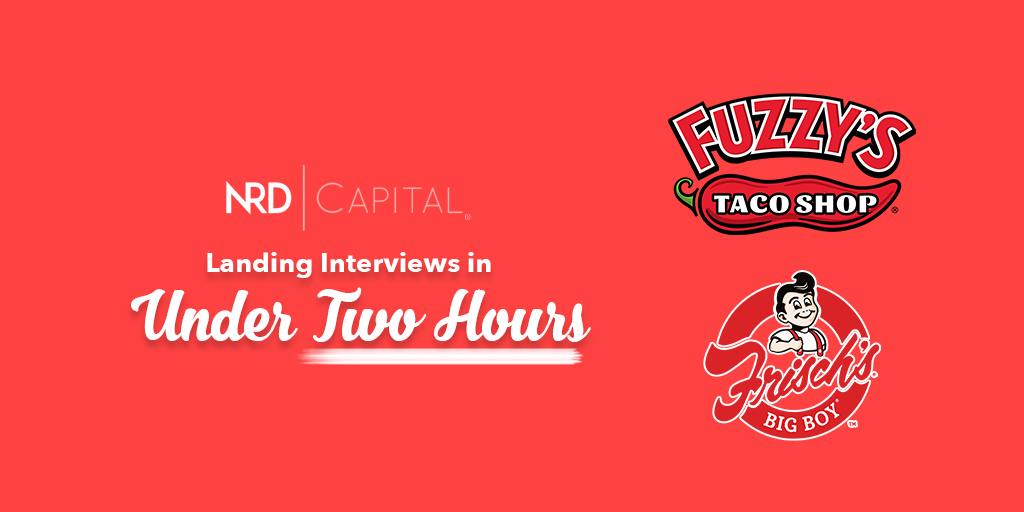As the owner or manager of a quick-service restaurant (QSR), you know that finding good employees and keeping them is extremely difficult in the current economic environment. You have also most likely been experiencing an increasing behavioral trend in your job applicants and employees called “ghosting.”
Ghosting is a term originally coined in the dating industry for a dating partner that went “dark.” After the first date or even a couple of months of dating, one of the partners goes silent. Despite the other partner calling and texting, the ghost partner is totally silent, not returning any calls or texts.
This same concept is now growing rapidly in the human resources world, especially in the QSR industry. Job applicants and even current employees have started exhibiting ghosting behavior at an alarming rate. Ghosting has become so pervasive in the labor market that it was even highlighted in the Federal Reserve’s Beige Book.
Ghosting in the QSR Industry
There are countless examples of ghosting in the QSR industry. Job applicants accepting jobs and then not showing up for their first shift at the restaurant and never being heard from again. New shift managers walking off the job in the first month and never being heard from again. Even more prevalent are job applicants accepting interviews and then not showing up for them. According to Indeed, 28% of job seekers ghosted an employer in 2020, up from only 18% in 2019. It is clear that ghosting is on the rise.
Ghosting is a major problem. It costs hiring managers valuable time that they could have spent operating their restaurants and providing better service to their customers. Ghosting also costs restaurants considerable amounts of money over time as they spend initial dollars on costs such as screening, training, and uniforms, only to have the new employee stop showing up and stop returning calls.
Is It Possible to Reduce Ghosting at Your Restaurant?
In the current climate of an already tight labor market that makes good employees hard to find and keep, ghosting is pouring salt on the wounds of exhausted and frustrated QSR owners and managers. The good news is that there are steps you can take to greatly reduce ghosting by your job applicants and employees.
Let’s take a closer look at four strategies.
Strategy #1: Build a Smart Technology Infrastructure to Prevent Ghosting
While you can greatly lower the ghosting rate, it’s unlikely that you’ll escape ghosting entirely. Using cutting-edge technology to reduce ghosting—saving time and money—is the secret.
There are three key components to a smart anti-ghosting technology infrastructure:
Component 1: Smart Screening
Use advanced hiring technologies to automatically assess the quality of job applicants before you schedule a time to meet them. Examples of these technologies include having applicants upload a short video introducing themselves, or prompting applicants to answer several questions to determine if they meet your requirements. This smart screening technology is the first layer of defense that you can successfully implement to reduce ghosting because it prevents candidates who are more likely to ghost you from taking up time on your interview schedule.
Component 2: Automated Interview Scheduling
Hiring managers know first-hand how much time can be spent on doing multiple back and forth calls and texts just to get an interview scheduled. Instead of using this arcane method, adopt a technology platform that allows you to give permission-based calendar access to job applicants so they can schedule an interview with you during the times you’ve marked yourself available. This technology eliminates the back-and-forth communications and saves you valuable time that you can use to run the best operation possible.
Component 3: SMS Text Confirmations
In addition to wasting time trying to get interviews scheduled for ghost-likely applicants, hiring managers also waste considerable time waiting around for ghost applicants who never show up to their scheduled interviews. There is now a powerful technology solution available to QSRs in the form of SMS text confirmations. With SMS text confirmations, applicants automatically receive a text message from the hiring manager shortly before their interview asking them to reply to confirm their interview. If they do not reply, then the hiring manager knows not to now wait for them and can instead devote their energy to running the restaurant. Jamba recently reduced its ghosting rate by 90% by utilizing this SMS text auto-reminder capability.
Strategy #2: Mention Non-Monetary Benefits at the Very Beginning of the Hiring Process
In the current hotly contested labor market, it’s critical that you stand out from your competition when it comes to the hiring process. One of the best ways to set your restaurant apart from the competition is by mentioning your non-monetary benefits in the very first communication with a job applicant. By non-monetary we mean any benefit besides their hourly wage. This could be any special perk such as partially subsidized childcare, career coaching, hiring parties, or other fringe benefits. By giving applicants upfront visibility into what you can offer them, you’ll help motivate them to follow through with your process and not ghost you when it comes time to interview.
Strategy #3: Make an Extremely Professional First Impression with a Personal Touch
Another way to set yourself apart and reduce ghosting is to make an extremely professional first impression with an added personal touch. In order for your restaurant to make a highly professional first impression, you may need to give your hiring managers extra training.
Not all hiring managers have the skills and training to communicate and behave professionally in the hiring process. The first impression that your restaurant makes to an applicant should engage them and make them feel respected and valued.
Additionally, we recommend your hiring manager adds appropriate personal touches in their communications so that applicants aren’t left feeling like just another number. If your hiring managers can connect with applicants in a personalized yet professional way, it increases the chances that an applicant will not ghost your restaurant because there will be a greater sense of mutual empathy between applicant and hiring manager. Examples of personalization include being sure to use the applicant’s name frequently in communications and making specific positive comments on the experiences they have shared in their application about their past work.
Strategy #4: Run a Highly-Organized Onboarding Process for New Hires
According to the Society for Human Resource Management, up to 20% of turnover happens within the first 45 days of starting a new job. So, it’s critical that you run a highly organized and engaging onboarding process.
You should have a clearly documented onboarding process that provides a cohesive experience for new hires. Avoid miscommunications and disconnects between multiple managers during the onboarding process. When managers are not on the same page, it’s a red flag to new hires and the chances of ghosting will likely increase as a result.
During onboarding, you should also continue to make the new hire feel respected and appreciated. If possible, have a company event outside of work hours that brings the team together. Social activities like this help new hires meet and get to know existing employees. When employees feel part of the team through engaging and positive onboarding experiences, the chances of ghosting decrease.
Don’t Let Ghosting Spook You, Instead Be Proactive
Ghosting will inevitably happen to every restaurant from time to time. But with careful planning and implementation of infrastructures—technologically, organizationally, and interpersonally—you’ll have a strong foundation for reducing it. A great example of this is how Dunkin’ recently reduced its ghosting rate by 90%.
Dunkin’ is not the only QSR having tremendous success reducing ghosting. There are many others who are adopting strategies that are helping them engage applicants and streamline hiring.
If you would like to learn more about how to dramatically reduce the ghosting rate at your restaurant, schedule a free demo with one of our Hiring Specialists today!





